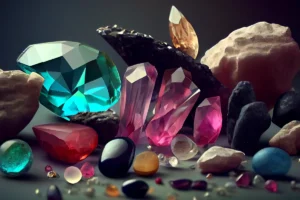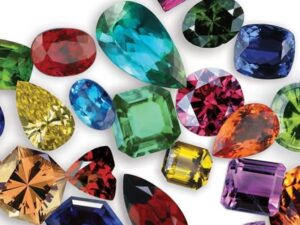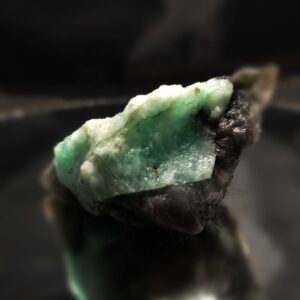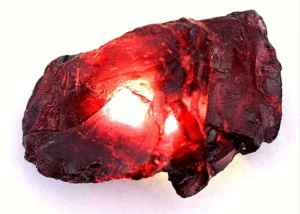The value of gemstones is influenced by a combination of natural rarity, market demand, and specific quality factors. Whether you’re buying gemstones for personal enjoyment, jewelry, or investment purposes, understanding the key factors affecting pricing and valuation is essential. This guide explores the most significant elements that determine the worth of a gemstone.
Factors Affecting Gemstone Prices and Valuation

1. The 4Cs: Carat, Cut, Clarity, and Color
Like diamonds, colored gemstones are often evaluated based on the 4Cs, which significantly impact their value.
a. Carat Weight
- Carat weight measures the size of a gemstone, with larger stones generally being more valuable due to their rarity.
- However, two stones of the same carat weight can have vastly different values depending on cut, clarity, and color.
- Some gemstones, like opals and pearls, are valued based on different size criteria rather than carat weight.
b. Cut Quality
- A well-cut gemstone enhances its brilliance, fire, and color, making it more visually appealing.
- Poorly cut gemstones may appear dull and lack symmetry, reducing their market value.
- Some cuts, such as round and cushion, tend to hold more value due to their popularity.
c. Clarity and Inclusions
- Clarity refers to the presence of inclusions (internal flaws) or blemishes (surface imperfections).
- In some gemstones, such as emeralds, inclusions are common and do not drastically lower value.
- Other stones, like aquamarine and topaz, are expected to have high clarity, and any visible inclusions can significantly reduce their worth.
d. Color Intensity and Saturation
- The most important factor for colored gemstones is their hue, tone, and saturation.
- High-value gemstones exhibit vivid, evenly distributed colors without dull or overly dark tones.
- Some colors command premium prices, such as deep red rubies and royal blue sapphires.

2. Rarity and Availability
The scarcity of a gemstone in nature directly affects its value.
- Extremely Rare Gemstones – Examples include alexandrite, paraiba tourmaline, and grandidierite, which fetch high prices due to their limited supply.
- Moderately Available Gemstones – Gems like sapphire, ruby, and emerald are rare but still available in commercial quantities.
- Abundant Gemstones – Amethyst, citrine, and garnet are relatively common, making them more affordable.
3. Origin and Geographic Influence
A gemstone’s place of origin can significantly impact its value.
- Burmese Rubies – Considered the finest rubies due to their intense red color and high-quality composition.
- Colombian Emeralds – Highly sought after for their deep green color and superior clarity.
- Kashmir Sapphires – Renowned for their velvety blue appearance, often commanding premium prices.
Gemstones from historically significant or exhausted mines tend to appreciate in value over time.
4. Treatments and Enhancements
Many gemstones undergo treatments to improve their appearance, but untreated stones are typically more valuable.
- Heat Treatment – Common for sapphires and rubies to enhance color.
- Oil Treatment – Used in emeralds to reduce visible inclusions.
- Irradiation and Coating – Sometimes applied to topaz and quartz to change color.
Untreated gemstones with high clarity and color are rare and command higher prices.

5. Market Demand and Trends
Gemstone prices fluctuate based on fashion trends, investment interest, and overall demand.
- High-Demand Gemstones – Blue sapphires, rubies, and diamonds have consistently strong market demand.
- Trending Stones – Paraiba tourmaline, spinel, and fancy-colored diamonds have seen rising popularity in recent years.
- Collector’s Items – Rare, historical, or limited-edition gemstones fetch higher prices among collectors.
6. Certification and Authenticity
A gemstone with certification from a reputable lab ensures transparency in quality and pricing.
- GIA (Gemological Institute of America)
- AGS (American Gem Society)
- SSEF (Swiss Gemological Institute)
- HRD Antwerp
Certified gemstones often command higher prices due to verified quality and authenticity.
7. Ethical and Sustainable Sourcing
As consumers become more aware of ethical concerns, responsibly sourced gemstones have increased in demand.
- Fair Trade and Conflict-Free Stones – Ethically sourced gems may be priced higher due to sustainable mining practices.
- Lab-Grown vs. Natural Gemstones – While lab-grown gemstones are affordable and conflict-free, natural stones retain higher long-term value.
Gemstone pricing and valuation depend on a complex mix of quality factors, rarity, market trends, and treatments. Understanding these elements helps buyers make informed decisions when purchasing gemstones for personal enjoyment or investment. By choosing high-quality, well-certified gemstones, you ensure long-term value and appreciation.


